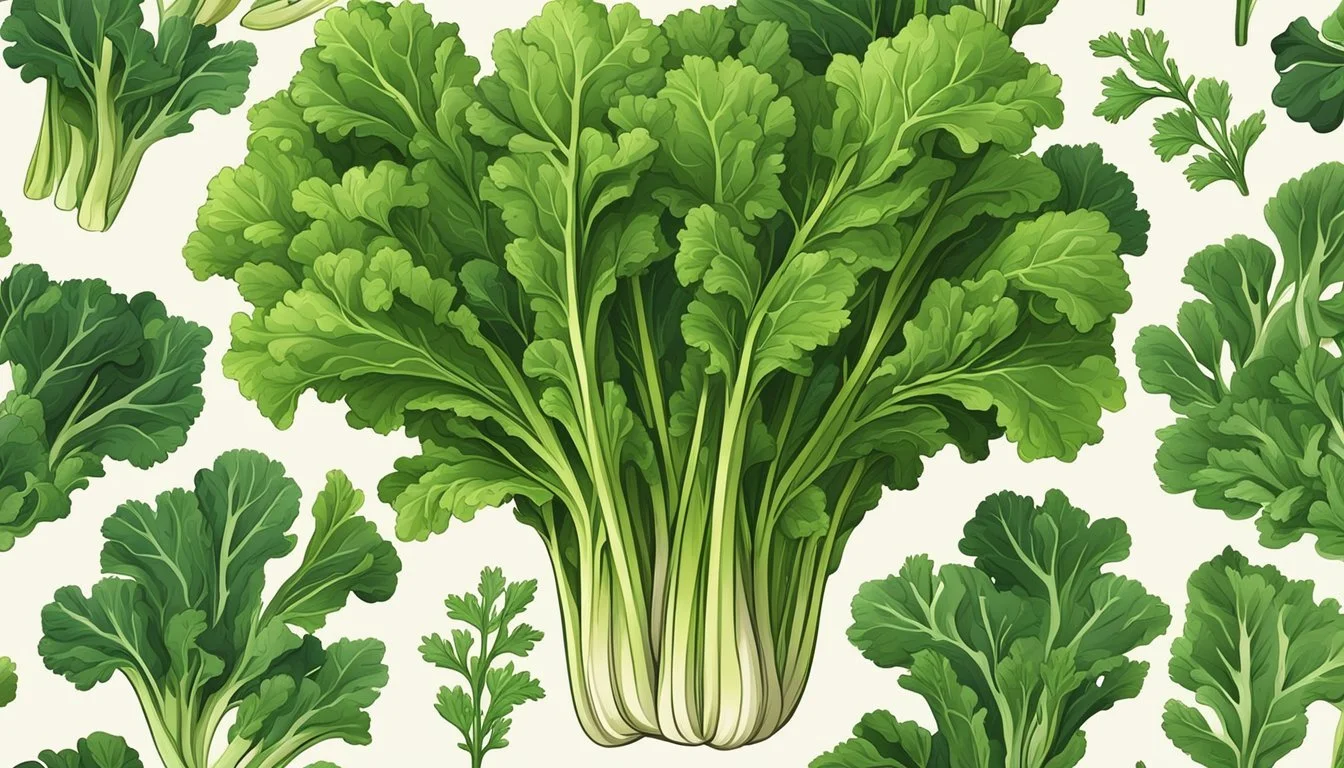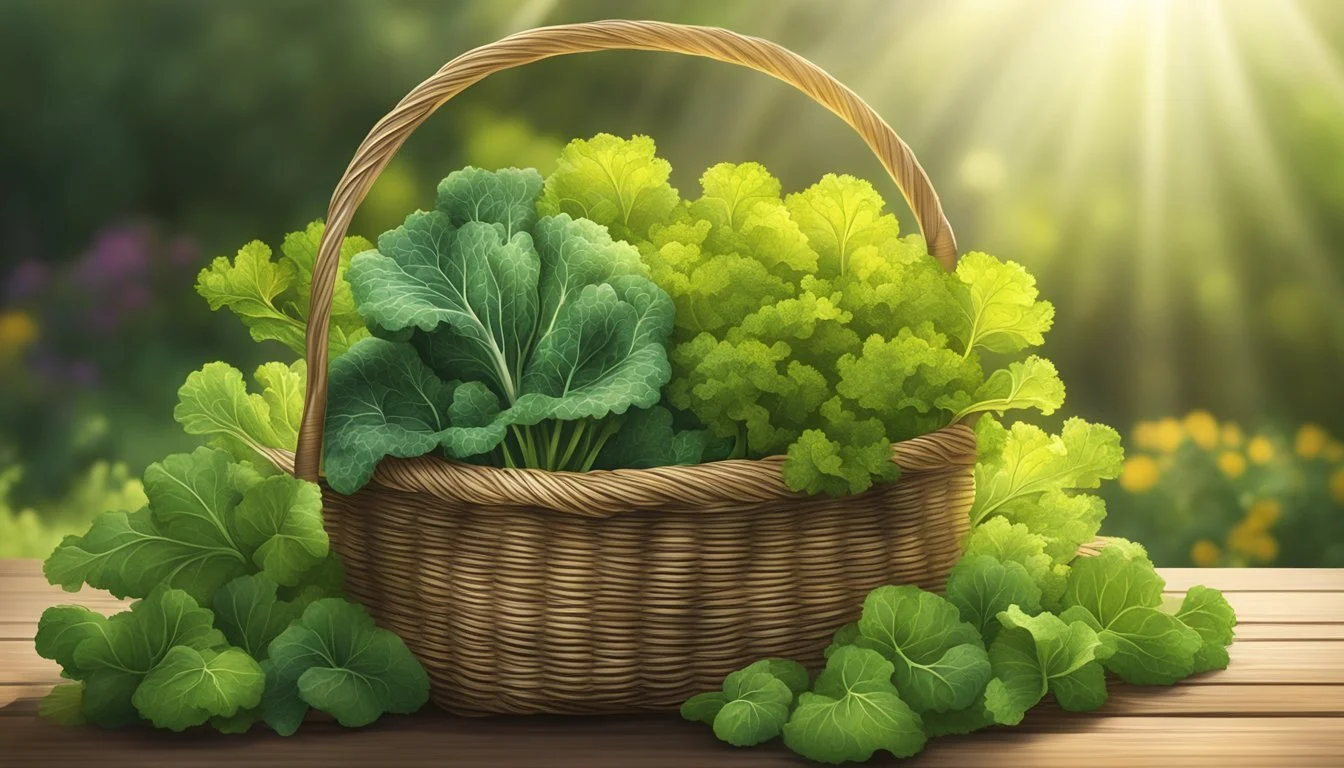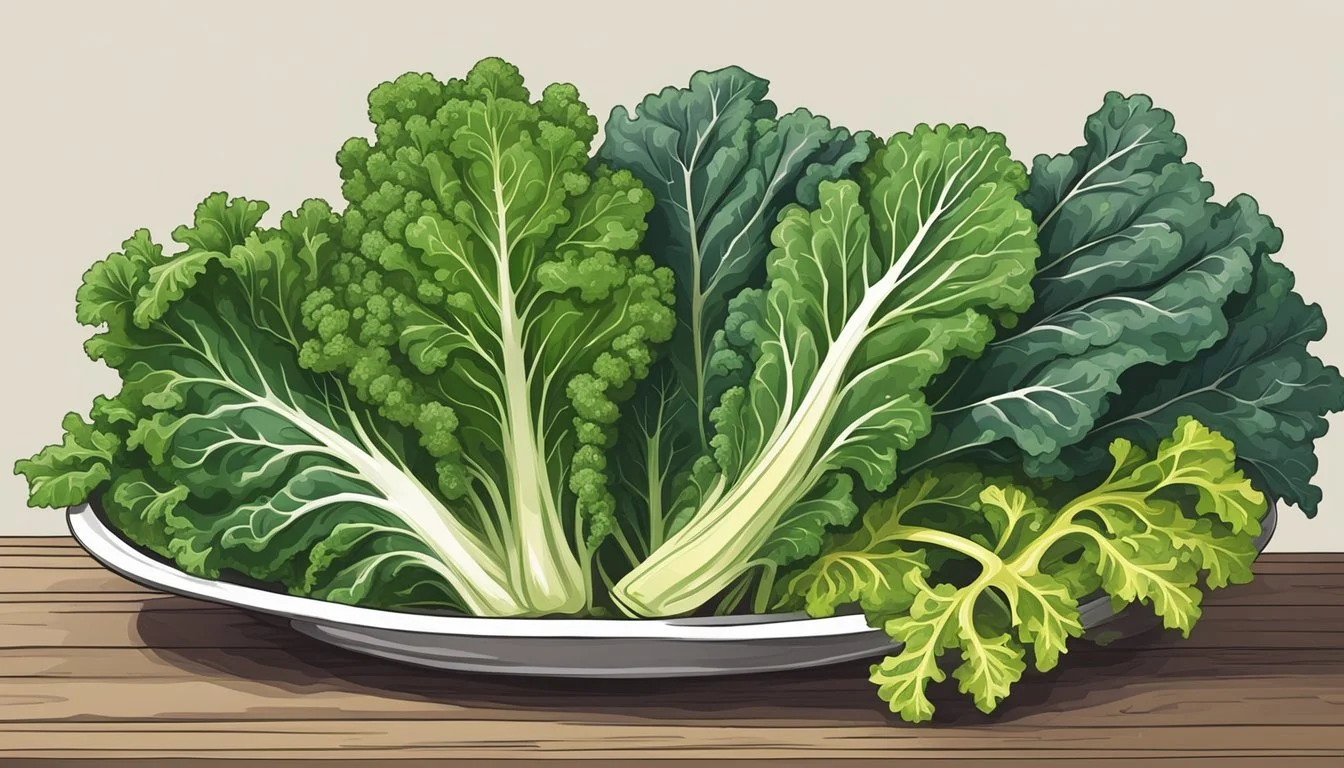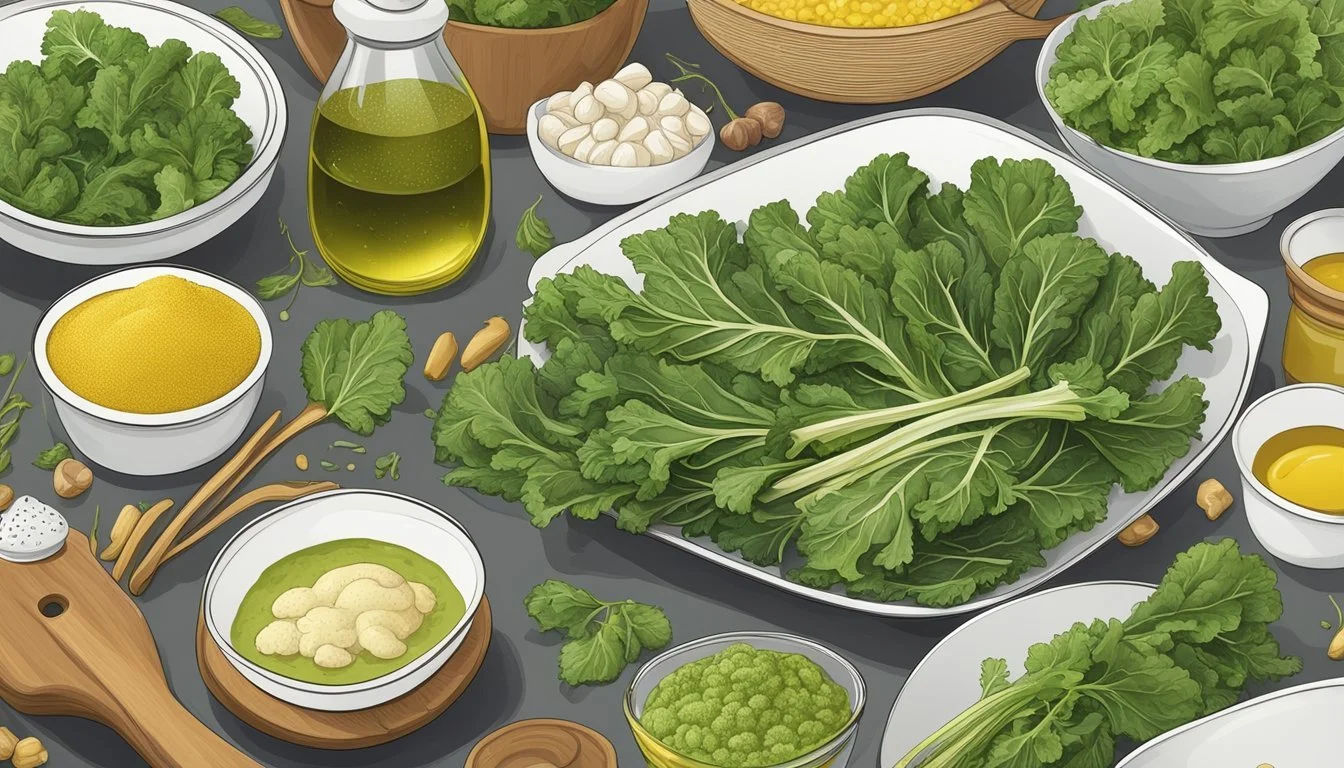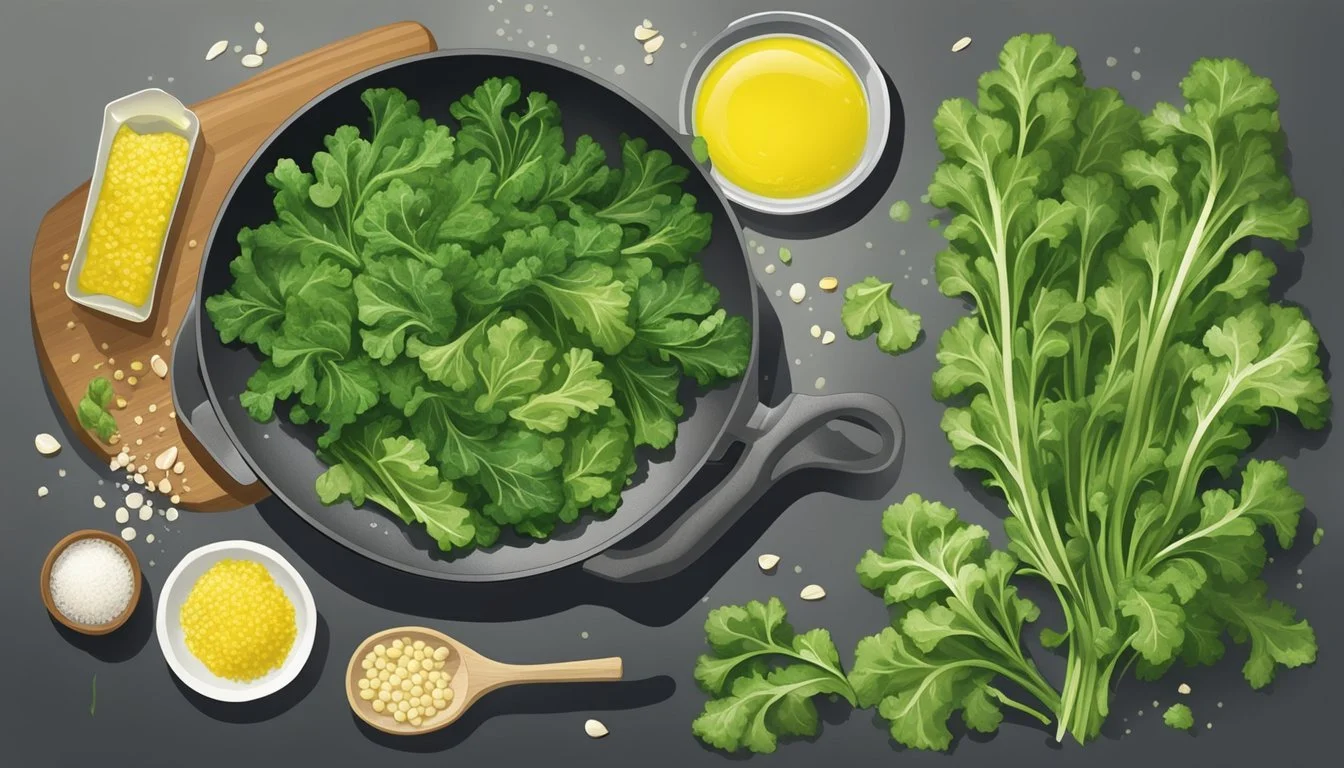Mustard Greens Substitutes
Best Alternatives for Your Recipes
When a recipe calls for mustard greens and you don't have any on hand, there’s no need to worry. There are several versatile substitutes from the brassica family and other leafy greens that can stand in effectively. Kale makes a fantastic substitute, offering a slightly bitter and earthy flavor that holds up well in cooking. It’s sturdy and chewy, ensuring it maintains its texture in various dishes.
Baby spinach leaves are another excellent option. These tender leaves can replace mustard greens in most recipes, especially Asian and African cuisine, due to their mild and slightly sweet flavor. Use them in equal amounts for a quick and easy switch.
Turnip greens also work well as a substitute, sharing the same peppery bite as mustard greens. These greens cook similarly and provide the robust flavor needed in many traditional dishes. Whether you’re making a stir-fry, stew, or salad, these substitutes will keep your dish flavorful and satisfying.
Nutritional Profile of Mustard Greens
Mustard greens are known for their dense nutrient content, offering a variety of vitamins, minerals, and antioxidants. These leafy greens contribute significantly to a healthy diet.
Vitamins and Minerals Content
Mustard greens are rich in vitamins A, C, and K.
Vitamin A is crucial for vision, immune function, and reproduction. One cup of raw mustard greens provides a substantial amount of this vitamin.
Vitamin C acts as an antioxidant and is vital for the repair of all body tissues. It aids in collagen formation, iron absorption, and immune system function.
Vitamin K is essential for normal blood clotting and bone health. Cooked mustard greens offer an impressive 690% of the daily value (DV) for vitamin K per cup.
In addition to vitamins, mustard greens contain several important minerals. Calcium supports bone health and iron is necessary for the production of hemoglobin. They are also a good source of copper, which helps maintain healthy bones, blood vessels, nerves, and immune function.
Health Benefits
The high vitamin C content in mustard greens enhances the body's absorption of iron, which is particularly beneficial for individuals prone to anemia. The dietary fiber in mustard greens aids in digestion and helps maintain a healthy weight by creating a feeling of fullness.
Mustard greens are packed with antioxidants, which protect the body against oxidative stress. These antioxidants can reduce the risk of chronic diseases such as heart disease and cancer.
Consumption of mustard greens is linked to better bone health due to their rich vitamin K content, which plays a critical role in bone metabolism and the prevention of osteoporosis.
Fiber content in mustard greens promotes a healthy digestive system, reducing the risk of conditions like constipation and diverticular disease. These greens are a powerhouse of nutrients, making them a valuable addition to any diet.
Understanding Mustard Greens
Mustard greens offer a unique flavor and texture that can enhance many dishes. They are known for their peppery taste and fibrous leaves, which contribute to their popularity in various cuisines.
Flavor Profile
Mustard greens have a distinct peppery flavor. This pepperiness can vary in intensity but is generally sharper and more pronounced than that of other leafy greens. Their flavor also has an earthy undertone with subtle bitterness, which can add complexity to dishes.
These greens are often used in southern cuisine and Asian dishes where their unique taste can be highlighted. The bitterness can be reduced by cooking, making them more palatable to those sensitive to strong flavors.
Texture Characteristics
The texture of mustard greens is fibrous and sturdy. They have a chewy quality that holds up well to cooking methods like boiling, steaming, and sautéing. This resilience ensures the greens maintain their shape and do not become overly mushy.
When raw, they are slightly coarse but become tender when cooked. The strong texture makes them suitable for hearty dishes such as stews and stir-fries, where they can add both substance and flavor.
Choosing Substitutes for Cooking
When selecting substitutes for mustard greens, it's essential to consider the specific flavor and texture qualities you need. The following options cater to different culinary requirements, ensuring your dishes retain their intended character.
For Bitterness and Peppery Flavor
Arugula and dandelion greens are prime choices for replicating the bitterness and peppery kick of mustard greens. Arugula has a sharp, tangy flavor and works well in salads and sandwiches. Dandelion greens, known for their strong bitter taste, complement both raw and cooked dishes. Use them in stir-fries or blanched in soups to bring out their unique flavor without overpowering the dish. Both are excellent for adding a robust taste that can stand up to other bold ingredients.
For Earthiness and Robustness
To achieve the earthy, robust flavor similar to mustard greens, kale, collard greens, and Swiss chard are strong contenders. Kale, with its slightly bitter and chewy leaves, holds up well to various cooking methods like braising and steaming. Collard greens offer a comparable texture and can be used in stir-fries, soups, and slow-cooked dishes. Swiss chard, recognized for its earthy flavor and versatile leaves, makes an excellent substitute in sautéed dishes and stews. These greens also add a vibrant color and dense nutritional profile, making them ideal for hearty meals.
For Delicate and Sweet Notes
For a milder flavor and a more delicate texture, baby spinach leaves and spinach are suitable alternatives. Baby spinach leaves, tender and sweet, can be used in salads, soups, and as a cooked green in various recipes. Spinach, slightly sweet and versatile, works well in both raw and cooked applications, such as blanching or boiling. Incorporating these greens can lighten up a dish while still providing a nutritious boost. Spinach's quick-cooking nature makes it particularly useful in recipes where time is a constraint.
Popular Mustard Green Substitutes
Finding a suitable replacement for mustard greens depends on flavor, texture, and nutritional benefits. Several substitutes meet these criteria and offer unique culinary possibilities.
Kale Variants
Curly kale and lacinato kale are popular alternatives. Curly kale's frilled edges and robust texture make it ideal for soups and stews. It maintains its structure well during cooking.
Lacinato kale, also known as dinosaur kale or Tuscan kale, has a bumpy texture and slightly milder flavor. It works well in sautés and salads. These kale variants are packed with nutrients like vitamins A, C, and K, offering a healthful substitute.
Raw kale can also be massaged with olive oil to soften for raw dishes.
Versatile Spinach Substitutes
English spinach is mild and slightly sweet, making it a suitable substitute in dishes where bold flavors are not required. Its tender texture is perfect for quick-cooking and fresh salads.
Baby spinach leaves are even more tender and work excellently in dishes where mustard greens would be too robust. Spinach is versatile and can be used in both raw and cooked forms, including stir-fries and smoothies.
Using frozen spinach offers convenience, though it tends to be waterier than fresh spinach.
Asian Greens Alternatives
Chinese broccoli (gai lan) and Chinese mustard greens offer similar flavors with an Asian twist. Gai lan has tender leaves and thick, crunchy stalks, making it a great addition to stir-fries and soups.
Bok choy offers a mild flavor and crisp texture, suitable for steaming, sautéing, or raw preparations. It combines well with other vegetables and can stand up to bold sauces.
These Asian greens bring a versatile element to many dishes and are rich in vitamins and minerals.
Substitutes Origin and Cultural Use
Substituting mustard greens is a practice influenced by various cuisines and traditions. Both African and Asian influences as well as Mediterranean and European options provide versatile alternatives.
African and Asian Influences
Mustard greens have deep roots in African and Asian culinary traditions. In Africa, collard greens are a common substitute. These greens, known for their hearty texture and nutrient density, are often used in stews and soups.
In Asia, the use of turnip greens is prevalent. With a slightly bitter flavor, they are used in stir-fries and pickled dishes. Ethnobotanical practices in Asia often incorporate mustard greens and their substitutes for both culinary and medicinal purposes.
Mediterranean and European Options
In Mediterranean and European cuisines, several greens can replace mustard greens. Kale, widely used in Italy, holds up well in cooking and is perfect for hearty soups and stews.
Escarole, another Mediterranean favorite, offers a slightly bitter taste and is often used in Italian wedding soup. Spinach, with its mild flavor, fits well in various European diets, providing a tender and quick-cooking alternative suitable for salads and light dishes.
Unique Substitutes and Preparations
Exploring the world of mustard green substitutes brings a variety of tastes and textures to your dishes. Specialty leafy vegetables and non-green options offer unique flavors that can be easily incorporated into your recipes.
Specialty Leafy Vegetables
Fenugreek Leaves: Fenugreek leaves bring a slightly bitter and nutty flavor, adding complexity to your meals. Often used in Indian cuisine, they can be substituted for mustard greens in curries and sautés. Cooked fenugreek leaves have a mild spiciness, making them an interesting choice.
Rocket (Arugula): Rocket, known for its peppery flavor, is excellent for salads and raw preparations. It provides a spicy kick similar to mustard greens, making it a suitable alternative in cold dishes or as a garnish.
Kohlrabi Tops: The greens from kohlrabi vegetables are sturdy and slightly sweet, with a mild bitterness. They hold up well in cooking, similarly to mustard greens. Use them in stir-fries or soups to add unique texture and flavor. Kohlrabi tops can be hard to find but are worth seeking out for their distinctive taste.
Non-Green Substitutes
Grated Horseradish: For those seeking the signature spiciness of mustard greens without the greens, grated horseradish is an excellent choice. It adds a sharp, pungent flavor to dressings, sauces, and marinades. Use it sparingly to avoid overpowering other ingredients.
Wasabi: Wasabi provides intense heat and a unique flavor profile. It's best used in small amounts to add a spicy zing to dishes where mustard greens would traditionally be used. Incorporate wasabi into dressings and dips for an authentic punch.
Radish: Sliced or grated radishes offer a crunchy texture and mild spiciness. They make a great substitute, especially in salads or as a topping for tacos and sandwiches. Radishes can also be pickled to add a tangy flavor, enhancing your dish's overall taste.
Incorporating Substitutes into Recipes
When substituting mustard greens in recipes, it's essential to consider the texture, flavor, and cooking times of the alternatives. Matching these attributes will ensure the best culinary experience in both fresh and cooked preparations.
Salads and Fresh Preparations
When using substitutes for mustard greens in salads or fresh dishes, it's important to focus on the flavor and texture profile. Spinach, especially baby spinach, offers a tender and slightly sweet alternative. It pairs well in green salad mixes and retains a pleasant crunch.
Turnip greens also work well in fresh applications. They provide a mildly peppery flavor, closely mimicking mustard greens. Combining them with other fresh greens can create a balanced taste.
For those who prefer a bit more bitterness, kale can be an excellent choice. Its sturdy leaves add a robust texture, perfect for heartier salads.
Cooked Dishes Adaptations
In cooked dishes, collard greens can substitute mustard greens effectively. They maintain their structure and offer a similar bitter note, making them ideal for casseroles and braised recipes. Adjusting the cooking time is key, as collard greens may take slightly longer.
Swiss chard is another versatile substitute. Both the leaves and stems are edible, but it's best to cook them separately to achieve the perfect texture. The delicate leaves cook quickly, suitable for sautés and stews.
For a unique twist, consider using fenugreek leaves. These offer a distinct flavor that can elevate many cooked recipes. Their shorter cooking time means they'll integrate well into quick dishes while providing an aromatic complexity.
Culinary Techniques for Substitutes
Using substitutes for mustard greens requires managing different textures, employing variation in cooking techniques, and balancing flavors effectively. Recognizing how these replacements behave during cooking is crucial for achieving satisfying dishes.
Adjusting to Different Textures
Different greens have distinct textures. Kale provides a sturdy, chewy texture that holds up well in various dishes. Swiss chard is slightly tender and can become silky when cooked. Baby spinach offers a delicate, tender texture that requires minimal cooking time.
To properly manage these textures:
Kale: Needs a longer cooking time. Consider sautéing or steaming for about 7-10 minutes.
Swiss chard: Cooks faster than kale but slower than spinach. Sauté for 5-7 minutes.
Baby spinach: Wilts quickly. Gentle sautéing or blanching for 2-3 minutes is ideal.
Recognizing these differences ensures the substitute suits the recipe's demands.
Flavor Pairing and Balancing
Substitutes for mustard greens vary in flavor profiles. Kale has a slightly bitter taste, Swiss chard offers earthiness, and Spinach provides a mild, sweet flavor.
Balancing these flavors involves:
Using strong dressings with acidic components like apple cider vinegar or lemon juice to cut through the bitterness of kale.
Pairing Swiss chard with robust ingredients like garlic and olive oil enhances its earthy flavor.
Combining baby spinach with light, sweet components such as strawberries and balsamic vinegar complements its mild taste.
Understanding these pairings ensures a harmonious and flavorful dish.


